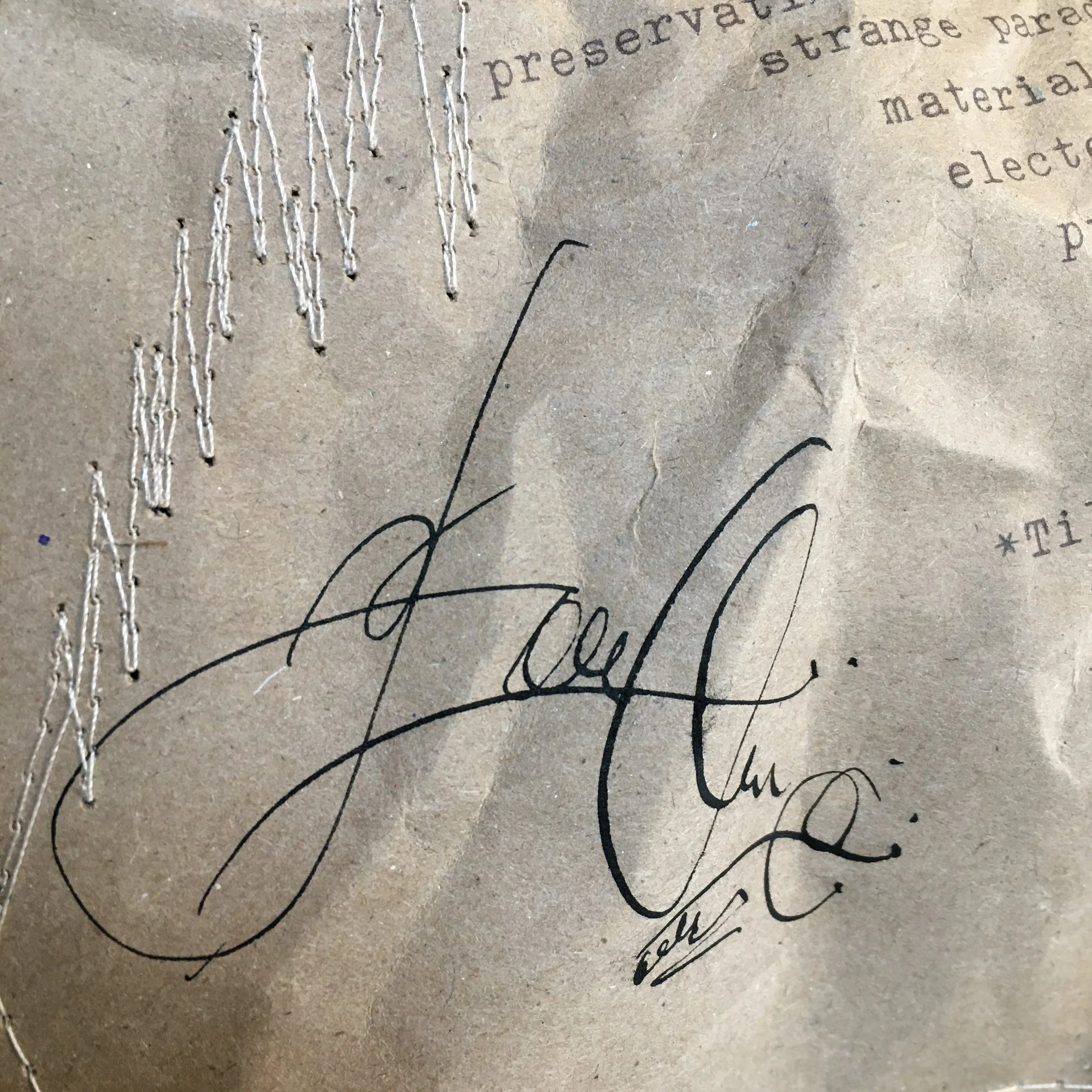Spencerian Script and Asemic Writing
Spencerian Script is a gorgeous style of handwriting popular in the United States from 1850 to 1925 that has found a place in my art. It was my grandmother’s handwriting, but you might recognize it from the Coca-Cola and the original Ford Motor Company logos. Taught in elementary schools and regarded at the time as an efficient and scientific method of handwriting, this beautiful script is rendered with a steel-nib pen dipped in ink. In professional settings, Spencerian Script was later replaced with the typewriter, and in school, students switched to learning the Palmer Method of cursive handwriting.
I’ve been interested in calligraphic handwriting since childhood and several years ago, taught myself Spencerian Script handwriting at home using reproductions of the original school workbooks. I was corresponding with my dad, who had Alzheimer’s disease, and used the letter-writing as an occasion to practice.
Learning Spencerian Script is all about developing a graceful hand and controlled movements. You practice the same ovals and swoops over and over. While frustrating and awkward at first, it soon becomes meditative: the flowing ink and scritch-scratching of steel pen nib on paper. The down strokes with the pen create a wide mark and the upstrokes create a narrow lines, which in part creates Spencerian’s graceful look.
Here I integrate asemic writing with typewritten text and stitches onto the pocket of a pair of paper overalls.
A couple of years later, my calligraphy evolved into an illegible, gestural graphic element that I started to integrate into my artwork; it’s my version of asemic writing. Asemic writing is a hybrid art form that fuses text with image. It looks like written text but there’s no semantic meaning.
I added a bit of asemic writing to these kraft paper boots, destined for an installation in March 2021.
In my art, the asemic writing says “words were spoken”, “a story was told” or “a person was here.” I’ve also used asemic writing to allude to treaties, contracts and broken promises, and to evoke a particular point in time: the Industrial Revolution in the United States and elsewhere.
If you are interested in learning more, I’ll leave you with these resources to explore. If you are like me, you’ll fall into these wormholes and never get out again, all for the better.
John Neal Booksellers for ink, paper, pens and other supplies
Spencerian Script reproduction workbooks to help you learn and practice at home.
Asemic: The Art of Writing by Peter Schwenger for inspiration.

